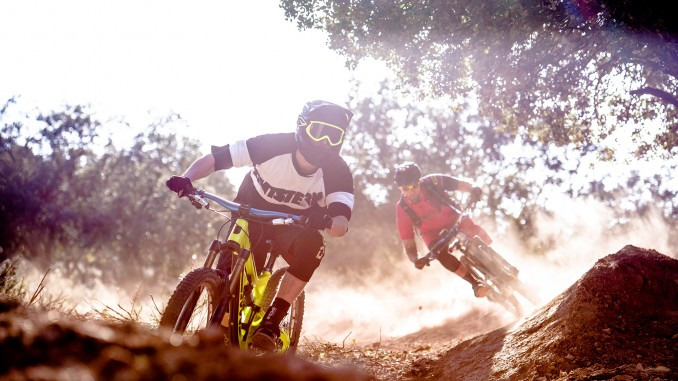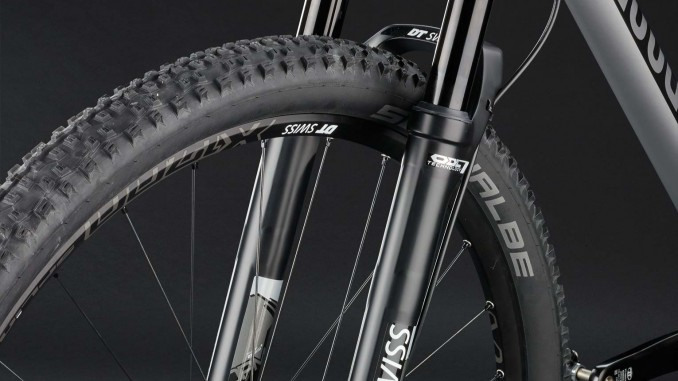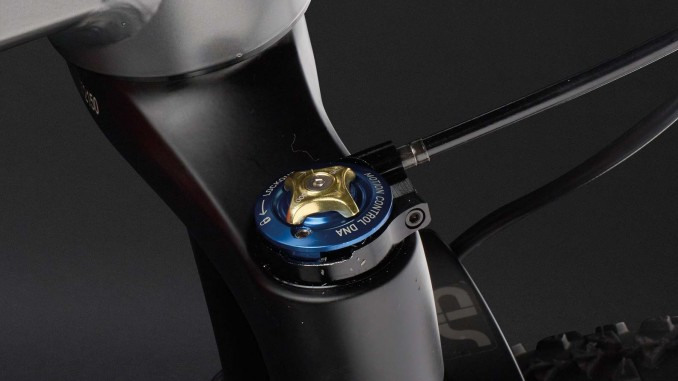Mountain bike suspension fork
Tips & purchasing info
)
The mountain bike suspension fork is one of the most heavily loaded parts. Even when it is adjusted to handle the load, depending on how often you use your bike and how rough you are on your gear during those tours, at some point the wear and tear will make itself noticeable. And after a bad accident, it is recommended that you change out the fork. So if it is time to treat your bike to a new suspension fork, there are two central questions: Does the new fork fit to my frame? And: What should that fork be capable of?
Here are a few points to answer your questions and help you choose the right mountain bike suspension fork.
Intended use - racing or downhill?
Just like the rest of your bike, the suspension fork should meet your needs. If you prefer racing on faster trails then every gram counts. So you should choose the lightest suspension fork. However, for downhill, you need extra support for jumps and rough stretches - the fork should remain stable and absorb shocks well.

Before purchasing, determine the right installation height
Which fork length you choose depends on the installation height. This is determined by the frame and is measured from the axle of the front wheel to the lower bearing cup. If you change the fork length, this will have an effect on your steering: A shorter fork means more agility. If you add to the installation height, then the wheel will follow the track better, but steering might be more difficult. It is usually recommended to stay with the stated installation height, since that is what the frame is designed for.
Braking system, axle fittings and headset standard
Does the prospective fork fit to your braking system? Check ahead of time which brakes your bike has - and choose the appropriate fork. These days almost all bicycles have a post mount brake. Still, you should check whether your bike is equipped with IS 2000 brakes, even if they are rarely used anymore. Regardless, there are adapters for both systems. However, if your bike is equipped with a rim brake, then the suspension fork will definitely need to have cantilever bolts.
It is also important to know with which type of axle is used to fit the front wheel into the fork. Does it have a quick release skewer? Also common used is a bolt-thru axle with a 15 mm or 20 mm axle.
Also important: What is the headset standard for your frame? Some examples include the classic Ahead headset with bearings outside of the head tube, or the increasingly common semi-integrated headset with bearings inside the head tube. A further question on this point: What is the diameter of the steering bearing cups? The sizes can differ greatly - if you’re unsure, definitely consult with an expert.

Equipment and extras for your mountain bike suspension fork
You should now have a good overview of the prerequisites that mountain bike suspension fork has to fulfil, so that it fits to your frame. Now it’s time for the fun part: How do you want to outfit your bike fork?
- Travel and spring type The longer the travel, the better the fork can handle rough routes. Starting at 130 mm travel there is the option of choosing a lowerable fork with which you can reduce the travel. The spring stiffness is related to your weight: light riders need stiffer springs than heavier ones. But this is also tied to the appropriate spring type:
- Air-sprung: This has become the most frequently equipped type of spring. Its advantage: this type can be optimally adjusted to the rider’s weight and is itself lightweight. In addition, air springs usually have progressive spring properties, ideal for cross-country or racing.
- Steel spring: This is usually found in cheap forks. Steel springs are robust and offer a linear suspension response. However, it is usually more difficult to adjust to the rider’s weight.
- Rebound and compression damping: An important function that you should pay attention to when buying a mountain bike suspension fork is the rebound damping. It regulates the rebound speed. You can usually already adjust the rebound from the outside on cheap suspension forks. The compression level however is responsible for the speed at which the suspension compresses. This can be further categorised as low-speed for a slow compression (e.g. bumps on the road) and high-speed for a fast compression (e.g. jumps or roots).
- Platform damping and lockout: These two functions are essentially the sequel to compression damping. The platform damping only reacts to a suspension of a certain force. This is either pre-set or can be set manually for high-end fork models. The lockout prevents the flow of oil through the compression circuit. So that the mountain bike suspension fork cannot fully compress. You can engage the lockout automatically or manually. For frequent use of this function, it is easier to have a fork with remote controls on the handlebar.
